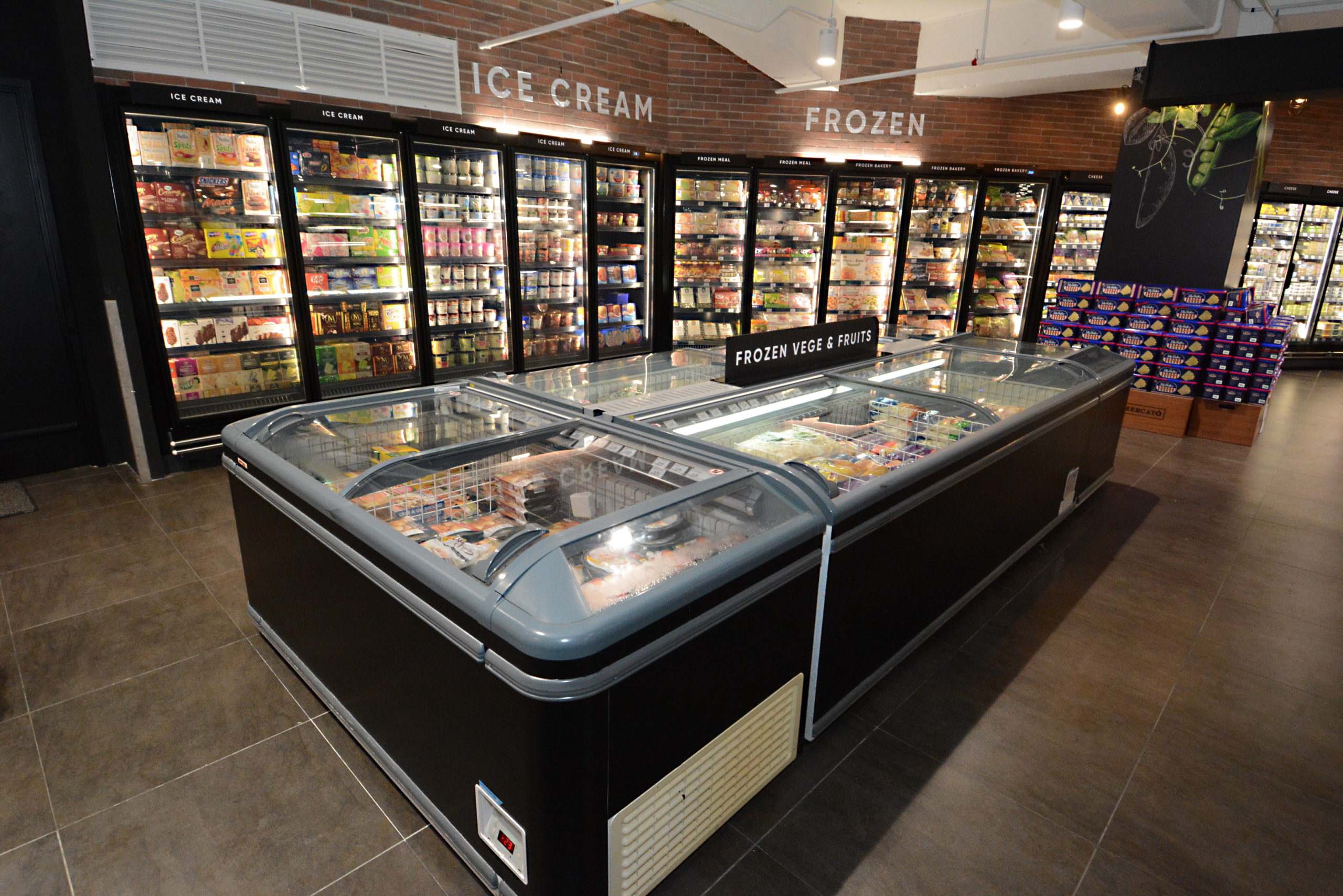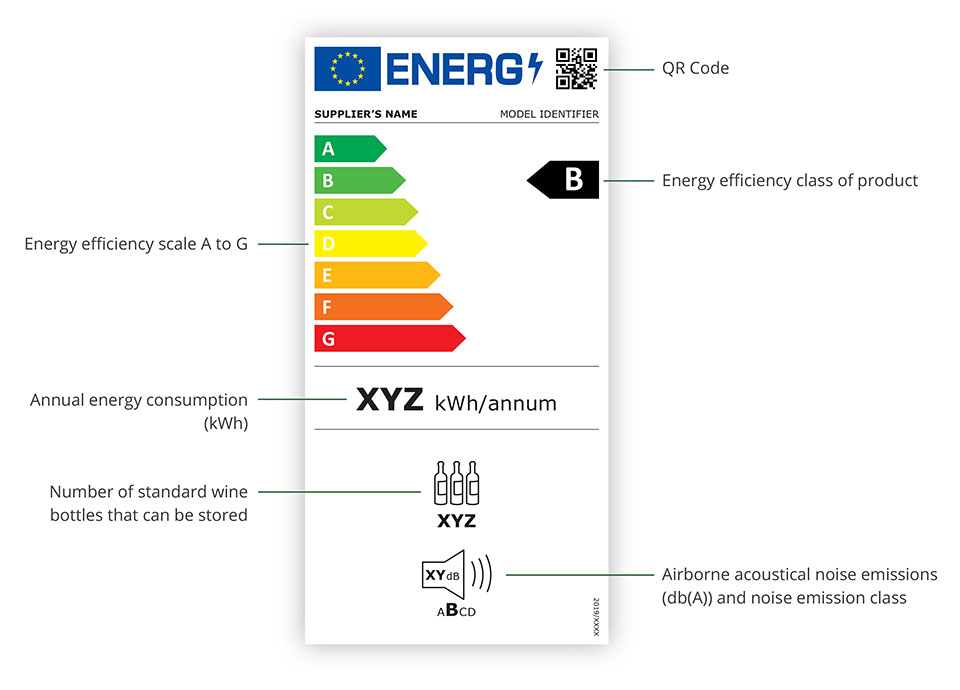Choosing a Commercial Refrigerator: Your Ultimate Buying Guide
Successful businesses understand the value of the equipment they use, especially when it involves keeping products fresh and safe. Among the most critical equipment is your commercial refrigeration. Investing in the right refrigeration equipment is crucial, not just for preservation but also for showcasing your items effectively. This article will guide you through the different types of commercial refrigeration and the factors you need to consider when choosing the best equipment for your business.

The Science Behind Commercial Fridges
A commercial fridge, also known as a commercial refrigerator or cooler, is a refrigeration unit designed and built to meet the specific demands of commercial settings, such as restaurants, supermarkets, bars, and delis. What technically defines a commercial fridge is primarily its performance and durability.
These units are engineered to maintain a precise temperature range typically between 0°C (32°F) and 4°C (40°F) for refrigerators and below -18°C (0°F) for freezers, ensuring the safe storage of perishable foods. Commercial fridges are equipped with robust compressors and condensers to withstand constant use, heavy loads, and frequent door openings. They often feature adjustable shelving, easy-to-clean surfaces, and reliable temperature controls, all of which are essential for maintaining food safety and quality in high-volume, professional foodservice environments.
Different Types of Commercial Refrigeration
Knowing what type of commercial refrigeration suits your needs is the first step in the right direction. Let’s discuss some common types:
Blast Chillers
Blast chillers are an essential piece of equipment in any serious commercial kitchen. They work by blasting cold air around food at high speeds, rapidly reducing the temperature to safe levels. This fast chilling process not only retains the food’s appearance, texture, and flavour but also enhances its shelf life by slowing down bacterial growth. Rapidly cooling foods reduces the time they remain at dangerous, bacteria-friendly temperatures, improving food safety and minimising waste due to spoilage.
Bottle Coolers
Typically found in bars, pubs, restaurants, or any commercial establishment that serves drinks, bottle coolers offer an efficient way to store and display beverages. They feature adjustable temperature controls to maintain the perfect environment for different drinks and internal lighting to highlight and visually enhance the product offering. Offering ease of access for staff and visual allure for customers, bottle coolers enable establishments to keep up with demand during peak periods effectively.
Drinks Display Coolers
A staple of convenience stores, cafes, and food service establishments, drinks display coolers provide a clear, organised display of refrigerated beverages. Their transparent design allows customers to easily view the available choices, which helps to boost impulse purchases and overall sales. They offer convenience to both customers who can quickly identify and select their desired drink, and staff who can restock and maintain it effortlessly.
Fish Fridge
A fish fridge is a critical asset to any kitchen dealing with fresh seafood. These particular refrigerators are designed to maintain optimal humidity levels necessary to prolong the freshness of fish and seafood. Their unique features such as humidity regulators and easy-to-clean finishes make them a hygienic and efficient solution to store perishable seafood, hence maintaining quality and safety.
Glass Door Fridge
Glass door fridges play a significant role in commercial environments. They promote easy inventory management by displaying the stored products visibly, so restocking becomes a straightforward task. Moreover, by showcasing the products in an organised and appealing manner, they can help to increase impulse sales, enhancing your establishment’s profitability.
Multi-Deck Cold Display
Designed for showcasing a wide variety of fresh produce, multi-deck cold displays are common in supermarkets and large convenience stores. These units offer a high-capacity storage solution while maintaining a consistent cool temperature. Their multi-tiered design allows for an attractive, easy-to-navigate display of products which in turn promotes sales. They also prioritise energy efficiency to keep operating costs low.
Pizza Prep Fridges
Pizza prep fridges are specifically crafted for the fast-paced environment of a pizza restaurant. They incorporate refrigerated storage for ingredients along with a convenient built-in preparation surface. This design ensures fresh toppings are always on hand, streamlining the pizza making process and increasing kitchen efficiency.
Salad Prep Fridges
Ideal for salad bars, sandwich shops, or any kitchen frequently preparing fresh salads, salad prep fridges are a vital part of a smooth operation. Their refrigerated compartments keep ingredients fresh, while sneeze guards ensure cleanliness and minimise food contamination. By enabling simultaneous storage and preparation, they contribute to a quicker and more organised food service.
Solid Door Fridges
Efficient and robust, solid door fridges are a standard feature in many commercial kitchens. While they don’t offer the same visibility as their glass door peers, their solid design provides better insulation and energy efficiency, saving costs in the long run. They are ideal for non-display storage, protecting ingredients from light and maintaining consistent temperatures inside.
Counter Prep Fridges
Perhaps one of the most resourceful pieces of commercial refrigeration equipment is the counter prep fridge. These units blend a handy preparation surface with built-in refrigerated storage, providing convenience and saving valuable kitchen space. Their design enables quick access to ingredients, speeding up the food preparation process, and improving service efficiency.
Retarder Proofer
An essential tool for any bakery, retarder proofers serve dual purposes: slowing yeast fermentation (retarding) and then activating it (proofing). This two-step process allows bakers to control the baking schedule and achieve a more consistent product. As a result, bakeries can offer fresh bread and pastries even during early morning hours, improving customer satisfaction and increasing sales potential.
Countertop Prep Fridges
Similar to their counter prep counterparts, countertop prep fridges offer a convenient, space-saving design but are designed to fit on countertops or other kitchen surfaces. Their compact design doesn’t compromise on convenience, offering quick access to ingredients for speedy food preparation. The addition of a countertop prep fridge can significantly enhance a kitchen’s operational efficiency.
Wine Coolers
Commercial wine coolers maintain the ideal temperature and humidity levels for storing wine, crucial conditions for protecting wine quality and flavour. These wine coolers have precise temperature controls and humidifiers to foster a perfect wine storage environment. The right commercial wine cooler can make a meaningful difference in the quality of served wines, enhancing your establishment’s reputation and profitability.
A Look at the Most Widely Used Commercial Refrigeration Equipment Types in Culinary and Bar Environments
1. Commercial Refrigerators
These are the backbone of many businesses such as restaurant kitchens. They keep food and drinks cold and help prevent spoilage. Commercial refrigerators come in many shapes and sizes, providing a variety of storage options.
2. Commercial Display Fridges
These are ideal for displaying food and drinks to customers. They add an attractive element to the sales area and can boost sales by enticing customers through visually appealing food and beverage presentation.
3. Commercial Drinks Display Coolers
Catered specifically for drinks, these coolers can store a variety of beverages at optimal temperatures. They’re an excellent addition for any small shop or food service business that offers cold drinks.
4. Multi-Deck Cold Display
Used mostly in supermarkets and large convenience stores, these provide maximum storage capacity while offering an attractive product display for customers.
Factors to Consider When Choosing Commercial Refrigeration Equipment
When you’re choosing your refrigeration equipment, here are some critical factors to consider:
- Size and Capacity: What are your storage needs? Your choice should accommodate them effortlessly.
- Energy Efficiency: High energy efficiency will save money and help your business remain environmentally friendly.
- Temperature Range: Your commercial refrigeration equipment should maintain a consistent and appropriate temperature range for the products it will store.
- Maintenance and Repair Costs: Will the device be easy to maintain and affordable to repair?

Features to Look for in the Best Commercial Refrigeration Equipment
Not all commercial fridges are created equal; certain features set the best commercial cooling equipment apart:
- Advanced Temperature Control: This ensures a consistent temperature, enhancing food preservation.
- Easy Maintenance Features: Things like auto-defrost can reduce manual labour and increase efficiency.
- Long Warranty: A lengthy warranty signals high quality and company confidence in their product.
- High Energy Star Ratings: Efficient products will save energy and lower electricity costs.
Tips to Consider Before Buying a Commercial Refrigerator
Understand the Purpose of the Refrigerator
- It’s essential to know the function your refrigerator will serve in your establishment. Different types will cater to different needs, such as the food to be stored, and where it will be placed. For example, kitchen-based refrigeration might demand solid-door reach-ins, pass-throughs, or dual temperatures. However, if the refrigerator is intended for public viewing, options with glass doors could be more appealing.
- The quantity of food you plan to store directly influences the refrigerator’s size selection. Walk-in fridges with remote compressors are suitable for storing large quantities of produce, while undercounter refrigerators are practical for limited spaces.
- For specific business requirements, consider specialized commercial refrigeration equipment. Sandwich tables with worktops are handy in a sandwich shop or salad bar. For bars, beer storage solutions like bar coolers for bottles and cans or a direct draw system for a keg is more customer-friendly.
Plan Ahead for Your Refrigerator Installation
- A defined installation plan eases the setup process and avoids potential redesigning in the future. Start by determining how the refrigerator will enter the building. Smaller models pose little problem, but two-door and three-door units may require a wider access point. Although walk-in models are larger, they are disassembled during delivery, making them easier to move in.
- Ensure proper ventilation for the refrigeration units. Leaving enough room around the unit will promote air circulation, reducing the risk of overheating. Refer to the manufacturer’s guidelines for the exact clearance needed for each model.
- Consider the location’s ambient temperature where the refrigerator will be housed. Prolonged exposure to higher temperatures could lead to system malfunctions and may invalidate the warranty. Similarly, place your refrigerator away from moist areas to avoid condenser corrosion due to high humidity levels.
Key Takeaways in Selecting the Right Commercial Fridges for Your Business
Choosing the right commercial refrigeration equipment is an important step for any food or drinking establishment. When you consider the factors and features listed in this guide, you’re on your way to making the best decision for your business. We encourage you to explore the commercial refrigeration category on our website further and find the perfect match for your needs.
